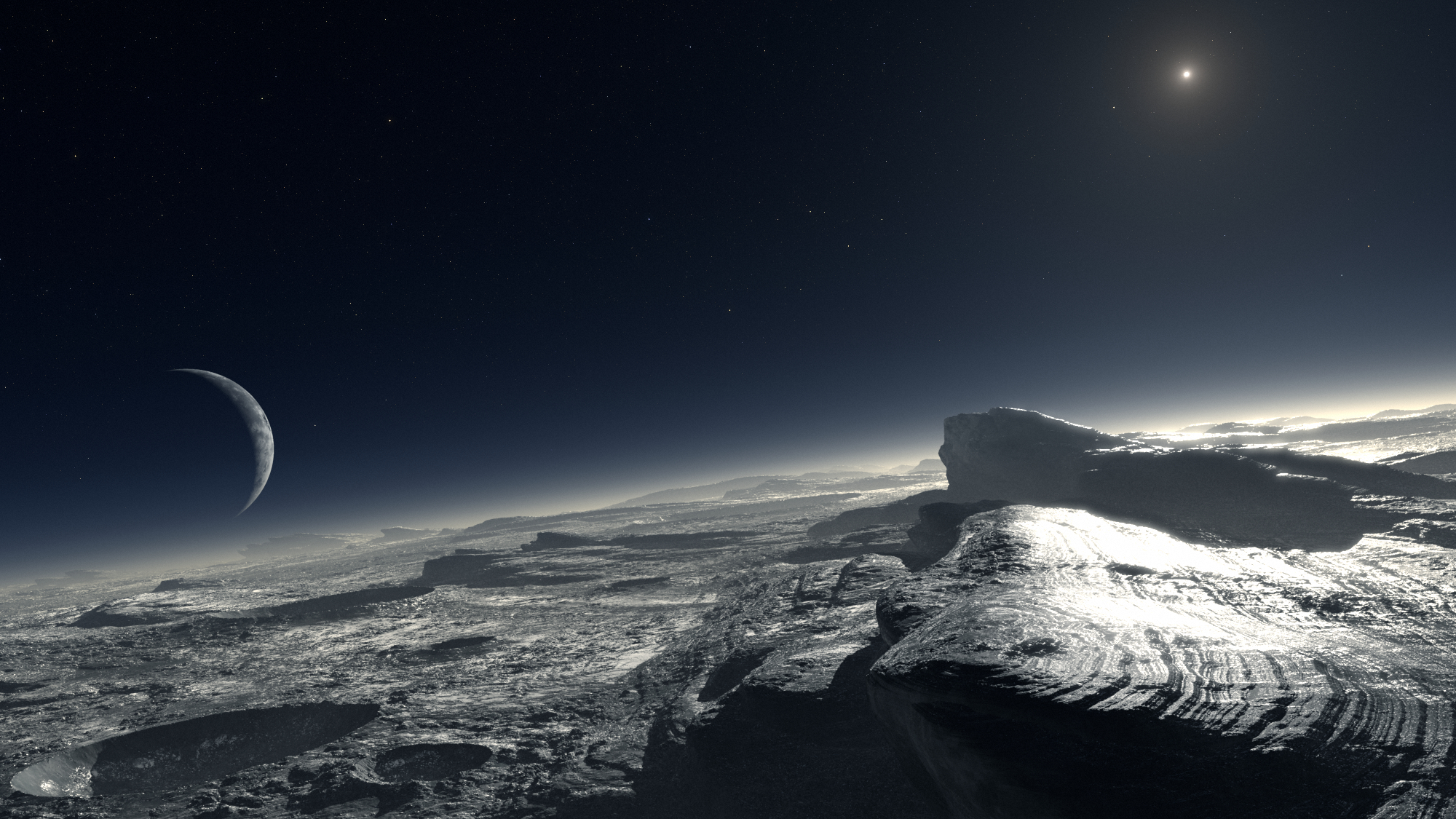

Comet 67P/C-G is about as large as Central Park of Manhattan Island, New York Excerpt from nytimes.com

March 9 Rosetta was 45 miles from Comet 67P/C-G when it photographed the comet’s head ringed with a halo of gas and dust. These jets extend from active areas of the comet’s surface and will become much more prominent over the next few months as the comet approaches the sun.

March 6 The comet’s head is angled down in this image of crisscrossing sunlit jets taken from 53 miles away.

Where is Rosetta? The Rosetta spacecraft took 10 years to match speed and direction with Comet 67P/C-G. The chase ended last August, and Rosetta will now follow the comet in its elliptical orbit as it moves closer to the sun. The spacecraft is no longer orbiting the comet because of increasing dust, but it is planning a series of close flybys.

March 6 Rosetta was 52 miles away when it looked up at the comet’s flat underbelly. The smooth plain at center covered with large boulders is named Imhotep.

Feb. 28 Rosetta captured a profile of the comet surrounded by curving jets of gas and dust from active regions. The spacecraft was 64 miles away.

Feb. 25–27 One day on Comet 67P/C-G is about 12 hours, the time it takes the comet to spin on its axis. The jets of gas and dust surrounding the comet are thought to curve from a combination of the comet’s rotation and the uneven gravity of its two-lobed structure.

Feb. 20 The comet’s sunlit underbelly casts a shadow obscuring the neck that joins the two lobes. Rosetta took this image from 74 miles away.

Feb. 18 Pale jets of gas and dust surround Comet 67P/C-G, seen from 123 miles away. Bright marks in the background are a mix of stars, camera noise and streaks from small particles ejected from the comet.

Feb. 14 On Valentine’s Day, Rosetta made its first close flyby of the comet, passing within four miles of the surface. Here the spacecraft looks down on the large depression at the top of the comet’s head.

Feb. 14 An image of the comet’s underbelly taken six miles above the surface during the Valentine’s Day flyby. The smooth plain in the foreground is called Imhotep.

Feb. 9 The comet is upside down in this image from 65 miles away, and a fan-shaped jet of dust streams from the comet’s neck region.

Feb. 6 Jets of gas and dust extend from the comet’s neck and other sunlit areas in this image taken from 77 miles away.

Feb. 3 This close-up image of the comet’s neck was taken from 18 miles away, and was the last image taken from orbit around Comet 67P/C-G. Rosetta will continue to follow the comet, but will leave its gravity-bound orbit because of increasing dust and instead begin a series of flybys.

Jan. 31 The comet’s head, neck and back are sunlit in this image taken from 17 miles away. A prominent jet of gas and dust extends from an active region of the surface near the comet’s neck.

Jan. 16 The tail of the comet’s larger lobe points up, revealing a smooth plain named Imhotep at left. Rosetta was 18 miles away when it took this image.

Jan. 3 The smooth plain named Imhotep, at center right, lies on the comet’s flat underbelly, seen here from a distance of about 18 miles.

Dec. 14, 2014 The large triangular boulder on the flat Imhotep plain is named Cheops, after the Egyptian pyramid. The spacecraft was about 12 miles from the comet when it took this image.

Dec. 10 Sunlight falls between the body and head of the comet, lighting up a large group of boulders in the smooth Hapi region of the comet’s neck. To the right of the boulders, the cliffs of Hathor form the underside of the comet’s head. Rosetta took this image from a distance of 12 miles.

Dec. 2 The round depression in the middle of the comet’s head is filled with shadow in this image taken 12 miles above the comet.

Nov. 22 An overexposed image of Comet 67P/C-G from 19 miles away shows faint jets of gas and dust extending from the sunlit side of the comet.

Nov. 12 Rosetta’s washing-machine sized lander Philae successfully touched down on the comet’s head. But anchoring harpoons failed and Philae bounced twice before going missing in the shadow of a cliff or crater (above). Without sunlight Philae quickly lost power, but might revive as the comet gets closer to the sun. On March 12, Rosetta resumed listening for radio signals from the missing lander.

How big is the comet? The body of Comet 67P/C-G is about as long as Central Park. For images of Rosetta’s rendezvous and the Philae landing, see Landing on a Comet, 317 Million Miles From Home.
























Despite crash of Spaceship Two ~ Virgin Galactic will continue pursuing mission to fly tourists to space
csmonitor.com
By Bryan Cronan, Staff Writer
It's been two weeks since the fatal crash of Virgin Galactic's SpaceShipTwo. As authorities continue to investigate what caused the crash, Virgin Galactic says the accident will not hinder the company's plans to send tourists to space.
Virgin Galactic CEO George Whitesides told a crowd Thursday that the company will continue pursuing its mission to take tourists to space. He made the comments while speaking in Culver City, Calif., to a panel organized by the Rand Corporation.